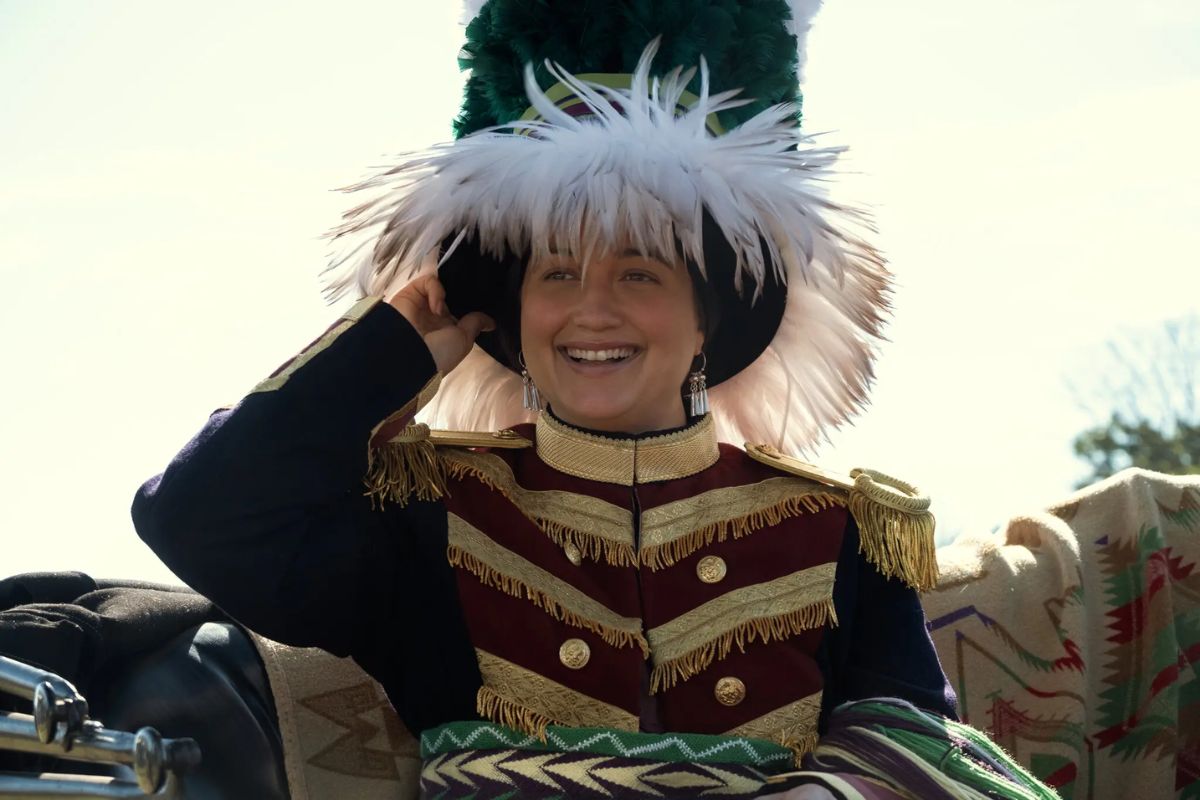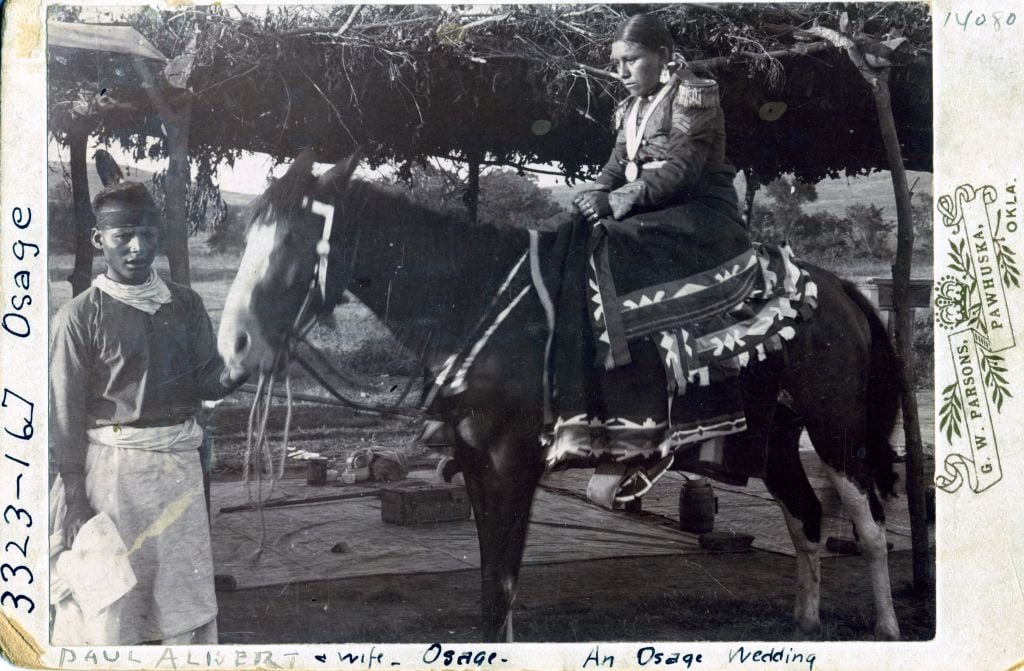The History Behind Mollie’s Wedding Attire in ‘Killers of The Flower Moon’

While Martin Scorsese’s Killers of the Flower Moon is certainly not a love story, the movie depicts fascinating images and traditions of Osage courtship not familiar to many viewers. This includes a vibrant, 1917 wedding ceremony between Mollie Kyle (Lily Gladstone) and Ernest Burkhart (Leonardo DiCaprio).
**SPOILERS ahead for Killers of the Flower Moon**
In the wedding scene, Ernest wears a suit that’s very similar to what many men wear today. However, Mollie wears attire that many outside Oklahoma have probably never seen before. That is, traditional Osage wedding coats and hats whose history goes back over two centuries.
Almost exactly 100 years before the Osage first found oil on their land, they met with then-President Thomas Jefferson. This meeting happened right after Napoleon sold what’s commonly referred to as the Louisiana Purchase to the U.S. As the dominant Native American group in what would later become Kansas, Missouri, Colorado, Arkansas, and Oklahoma, Jefferson desired to push the Osage out and eventually did to expand slavery. During the Osage’s time in D.C., the Jefferson Administration gifted the delegation high-ranking military garb to get on their good side, as they did with many other Indigenous groups. Because the men were too tall and broad-shouldered for the uniforms, the Osage men passed them down to their daughters.
A century of Osage wedding dresses

Due to the scarcity of the uniforms, and the fact that only people with family important enough to speak on behalf of the Osage acquired them, the coats became highly sought after. Osage women began to wear them on their wedding day. The Osage are the only known people who incorporate these uniforms into wedding wear. Eventually, they began to make their own and continue to replicate the 1700s-styled coat to this day.
As time passed, artists added little frills and symbolic elements to the dress, making it uniquely Osage. For example, at the waist, women often wear these finger-woven belts. The belts are incomplete with hanging strands. That’s so when the dress is handed down, the next owner can add to the pattern.
By the 1930s, marriage for love was the rule and no longer the exception for the Osage (and many others). With that, this dress fell out of fashion. However, the community continues to create these clothes in the present. Now, these coats and hats are used for Ilonshka ceremonies. These are the Osage’s version of the Plains Grass Dance (which can be seen at some pow-wows).
In doing research for the film, costume designer Jacqueline West took lots of photos at a 2019 exhibition on Osage bridal attire at the Sam Noble Museum at the University of Oklahoma (OU). This trip and other research trips built a relationship with the Osage Nation who helped consult and produce costumes for Killers of the Flower Moon. West and Scorsese’s enthusiasm over the wedding attire is part of the reason why the film has a wedding scene.
The decision to include this in the movie

By Mollie and Ernest’s 1917 marriage, white wedding dresses were popular. Several historical and technological events in the previous century contributed to the popularity of the white wedding dress. This included the affordability of purchasing clothes due to the Industrial Revolution, public fascination with Queen Victoria’s wedding, and the invention of photography. However, it’s unclear if Mollie and Ernest chose this route or something else. According to OU anthropology professor Daniel C. Swan, even being ‘full-blooded Osage’ (an outdated term only really used for clarification) and the eldest in her family, Mollie’s wedding to Ernest probably didn’t look like it did in the film.
Swan told The New York Times that marriage to a white man usually didn’t include the attire seen in the film. Scorsese and West balanced out where to take creative liberties after long consultations with members of the community. This included Killers of the Flower Moon’s Osage wardrobe consultants Julie O’Keefe and Alaina Maker. Scorsese explained to NYT via email, “In the end, we all felt strongly that the wedding clothes were so identifiably Osage that they had to be included.”
Because the film focuses mostly on the perspective of Ernest, this costuming choice also allowed moments of Osage joy and arts to take up more presence in the film. For that OU exhibition, Swan stated “The wedding clothes symbolized the transfer of leadership in the dance and celebrated the virtues of hospitality and generosity.”
(featured image: Apple TV+)
Have a tip we should know? [email protected]
